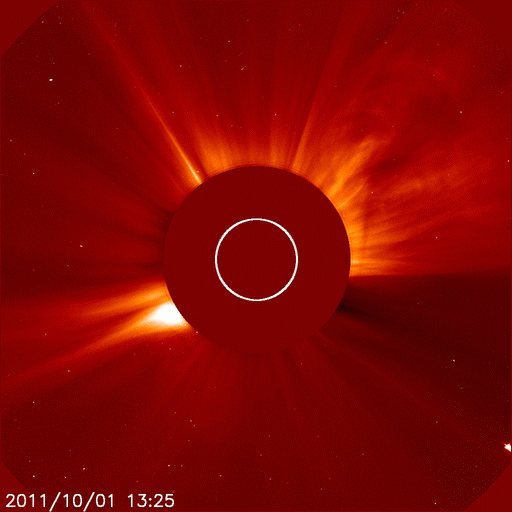Did Comet Cause Massive Solar Explosion on Oct. 1?
 A few hours after a comet discovered by amateur astronomers on September 30 impacted the sun, a massive coronal mass ejection took place directly opposite the object’s impact point. Previously, solar scientists would have assumed that this wasa coincidence, but observation of another sungrazer on July 5 revealed significant interactions with the sun’s atmosphere.
A few hours after a comet discovered by amateur astronomers on September 30 impacted the sun, a massive coronal mass ejection took place directly opposite the object’s impact point. Previously, solar scientists would have assumed that this wasa coincidence, but observation of another sungrazer on July 5 revealed significant interactions with the sun’s atmosphere.
So it now seems possible that comets–the largest of which are tiny in comparison to the sun–can nevertheless cause sreactions from the solar disk. Scientists at NASA’s Solar and Heliospheric Observatory will be studying this matter with interest.
read more